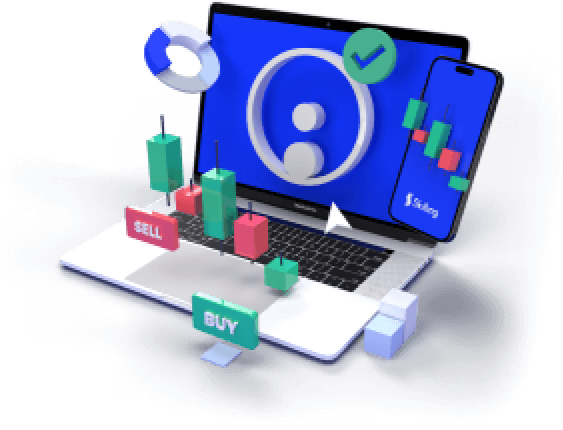For active traders, few events are more important than scheduled economic data releases. Announcements like U.S. non-farm payrolls (NFP), consumer price index (CPI), GDP figures, interest rate decisions, and central bank minutes can trigger sharp market moves within seconds.
In 2025, with continued uncertainty around inflation, employment, and monetary policy, these events carry even more weight. For many traders, the minutes before and after a major release represent both opportunity and risk. Knowing how to trade around economic data is now an essential skill.
Access 1,200+ global CFDs instruments.
Access a plethora of trading opportunities across the financial markets.

Which Data Releases Move Markets?
Not all news is created equal. Traders typically focus on a short list of high-impact indicators that have the most potential to move prices. These include:
- Non-Farm Payrolls (NFP): A key U.S. jobs report that impacts USD, indices, and gold
- CPI (Consumer Price Index): Closely tied to inflation expectations and rate hike odds
- Interest Rate Decisions: Central banks like the Fed, ECB, and BoE often move markets significantly
- GDP Reports: A backward-looking but still impactful indicator of economic growth
- PMI Data (Purchasing Managers’ Index): A forward-looking gauge of business activity
- FOMC Minutes or ECB Statements: Guidance on future monetary policy direction
Other events like retail sales, unemployment claims, and trade balances can also cause volatility, especially when actual figures deviate sharply from expectations.
Volatility Is Both a Threat and an Opportunity
Economic data doesn’t just create movement; it often creates unpredictable movement. Traders can see spreads widen, liquidity drop, and slippage increase immediately before and after a major release.
That’s why experienced traders prepare carefully. Many use one of two common approaches:
- Pre-News Positioning: Traders open positions before the data release, based on expectations and market consensus. This approach carries risk if the data surprises to the downside or upside.
- Post-News Reaction: Traders wait for the release and enter after the initial spike, attempting to catch momentum or fade overreactions. This can reduce risk but requires fast execution and discipline.
Which approach is better depends on the instrument, the type of data, market mood, and volatility conditions. But in all cases, understanding how the market has reacted in previous releases is key.
News Trading Strategies: From Breakouts to Fades
Traders typically use one of several well-tested strategies around news events:
- Breakout Trading: Entering positions when price breaks a key level (support/resistance) immediately after a release. This works best with strong momentum and clear market direction.
- Fade the Spike: Taking the opposite side after an overreaction — for instance, selling after a sharp rally on weaker-than-expected data. This requires quick recognition of reversal signals and tight risk control.
- Straddle Orders: Placing buy and sell stop orders above and below the current price before the release, aiming to catch whichever direction the market chooses. Often used with highly anticipated releases like NFP.
These strategies demand high execution speed and strict discipline. Slippage and false breakouts are common, so stop-loss placement and position sizing are critical.
Tools for Trading Economic Data
Success in news trading often depends on having the right tools and setup. Traders often consider:
- Economic Calendars: Platforms like Skilling provide integrated calendars with time, forecast, and previous data. Traders often track Tier 1 events and filter by country or currency.
- Volatility Alerts: Setting alerts on key assets like EUR/USD or goldcan help detect post-news movement.
- Newsfeeds and Terminals: Real-time access to news (e.g., via economic squawk services) gives traders a competitive edge.
- Auto-Execution Settings: For those using EAs or trading automation, conditions can be set to enter or exit trades once certain data thresholds are met.
Why miss out on the commodities market's potential?
Discover the untapped opportunities in top traded commodities CFDs like gold, silver & oil.

Managing Risk Around Releases
Economic releases are inherently risky. Even with the best planning, unexpected data can cause market whipsaws. To protect capital:
- Avoid overleveraging during news
- Use tighter stop-losses or trailing stops
- Reduce position size during high-risk events
- Watch for spreads widening immediately before releases
- Consider sitting out if uncertain — no trade is also a position
Risk control matters more than prediction. Many traders fail not because they make incorrect predictions, but because they manage risk poorly.
Timing and Pattern Recognition
Analyzing previous releases helps build intuition. Did gold rally or fall on the last CPI report? How did Nasdaq react to the last Fed decision? Backtesting reaction patterns for different instruments can give traders an edge.
Timing may vary: some assets react immediately, while others lag. Indices might move faster than forex pairs, while commodities may sometimes show second-wave reactions.











